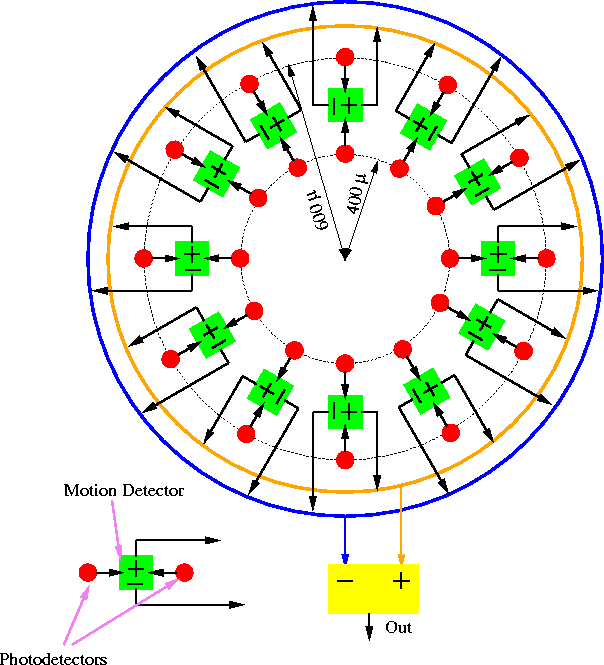
The time-to-crash sensor of Indiveri et al. is a demonstration of how a neuromorphic vision chip can be used for real life applications [Indiveri et al. 96a, Indiveri et al. 96b]. The chip uses the Gauss's theorem, which states that the surface integral of the divergence of a vector field over a surface is equal to the line integral of the normal vector field at the line boundaries of the area. For a camera moving at a constant velocity, the velocity field vector is linear and divergence is constant. Therefore, by integrating the velocity vectors at the boundaries of a circle the time-to-crash can be estimated using the Gauss theorem by

where N is the number of elements around the circle, R is
the radius of the circle, and ![]() are radial velocity components at
the elements.
are radial velocity components at
the elements.
The prototype time-to-crash sensor comprises 12 motion detector elements around a circle as shown in Figure 3.24. The motion detectors generate two positive and negative outputs. To avoid aliasing, the smaller value is set to zero!. The outputs are then summed over the entire circle for positive and negative velocities. The two values are finally subtracted to give an indication of the time-to-crash.
The sensor has been implemented in a 2 ![]() m CMOS process in a TINY
chip (2.2mmm
m CMOS process in a TINY
chip (2.2mmm ![]() 2.2mm). The radius of the inner and outer circles
that the photodetector are located are 400
2.2mm). The radius of the inner and outer circles
that the photodetector are located are 400 ![]() m and 600
m and 600 ![]() m,
respectively.
m,
respectively.

Figure 3.24: Indiveri's time-to-crash sensor.